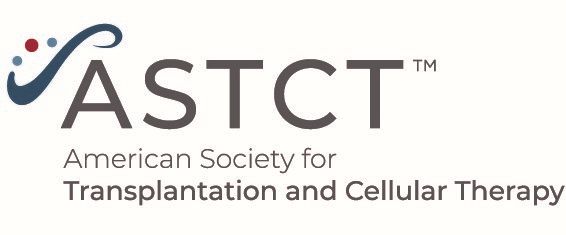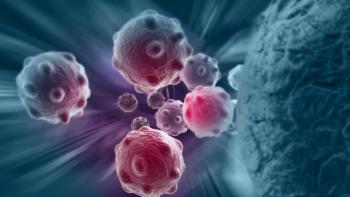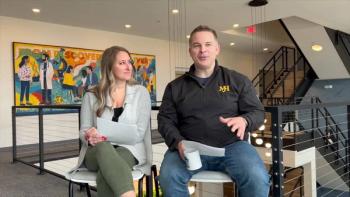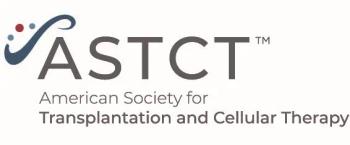
Racial and Ethnic Diversity on Blood and Marrow Transplant Clinical Trials Network (BMT CTN) Trials – We Can Do Better

Mary Horowitz, MD, MS, discusses efforts to increase diversity in clinical trials for blood and bone marrow transplant.
Introduction
The Health Services Oral Abstract Session at the 2022 Tandem Meetings featured six outstanding abstracts that addressed a wide range of topics. Dr. Linda Burns, co-chair of the session, Scientific Director for the Center for International Blood and Marrow Transplant Research (CIBMTR, Milwaukee, WI) and a member of the ASTCT Content Committee, recently spoke with Dr. Mary Horowitz, CIBMTR and the Medical College of Wisconsin, Milwaukee, WI, who was the first author on Abstract 83: Racial and Ethnic Diversity on Blood and Marrow Transplant Clinical Trials Network (BMT CTN) Trials – We Can Do Better, to learn more about the study results and plans being developed within the Network to increase diversity on clinical trials.
The BMT CTN is funded by the National Institutes of Health to conduct large, multi-center trials that address important issues in hematopoietic cell transplantation (HCT). More than 125 transplant centers have enrolled more than 14,600 patients on trials since 2003. Patients from underrepresented groups (URGs, other than non-Hispanic Whites) are known to face many barriers to care but their access to HCT trials is less well studied. This study examined access to BMT CTN trials open in 2014-2021.
Q: The BMT CTN is celebrating 20 years. What prompted BMT CTN to assess the diversity of enrollment on their clinical trials now?
A: This has long been an area of interest (and concern) for the Network. Our Special Populations Committee, established early in the Network’s evolution, is charged with reviewing measures to ensure access to trials for patients of all ages, genders, races and ethnicities. And we participated in a multi-network study of approaches to improve diversity (Tilley B, et al. Contemporary Clin Trials 2021). However, it has become very clear that traditional measures of addressing this issue have not been successful in BMT or in other areas of Medicine. In planning the 2021 State of the Science Symposium (SOSS), we established a Disparities and Access Committee to specifically advise on strategies to increase enrollment of patients from under-represented groups (URGs). One of their recommendations was to do an analysis such as the one we presented at the Tandem meetings (Heslop HE, et al. Blood and Marrow Transplant Clinical Trials Network State of the Science Symposium 2021: Looking forward as the network celebrates its 20th year. Transplantation and Cellular Therapy. 2021 27:885-907.). Although we have always done a rough comparison of the race and ethnicity of patients enrolling on BMT CTN trials with the race and ethnicity of patients reported to the CIBMTR (the vast majority of US allogeneic and autologous transplant recipients), we have known that this was an oversimplification that did not take into account the eligibility criteria for each trial. It seemed important to have a more accurate assessment of the magnitude of the problem.
Q: You and your co-authors conclude that the major barrier for patients from underrepresented groups to enroll on a BMT CTN trial is being able to access HCT as a therapy, on trial or not. Could you explain how the results informed this conclusion?
A: In general, there was less diversity on BMT CTN trials than in the general US transplant population (as reported to the CIBMTR); the proportion of patients in each trial who were non-Hispanic white was a median of 8% higher than among all transplant recipients. However, we see a bigger difference (median 12.5%) when we compare the race and ethnicity of the general CIBMTR transplant recipients in this study with recent census data for the general US population, which is about 60% non-Hispanic white.
Q: BMT CTN is unique in its sole focus on HCT; however, do you know how your results compare with those from other national cooperative groups that conduct multi-center studies in HCT?
A: This problem is not unique to BMT. Several recent papers highlight the lack of progress in increasing diversity on clinical trials in multiple fields. The FDA recently released a draft guidance document, “Diversity Plans to Improve Enrollment of Participants form Underrepresented Racial and Ethnic Populations in Clinical Trials,” and ASCO/ACCC issued a joint statement on increasing racial and ethnic diversity in cancer clinical trials (Oyer RA, et al. J Clinical Oncology 2022).
Q: What initiatives are being planned so that “we can do better” in the future?
A: Several initiatives are planned. One very specific change to our processes is to include a detailed diversity recruitment plan in every new protocol. This would establish targets and strategies, such as working with specific patient advocacy groups. We are awarding double accrual credit for enrollment of patients from URGs. We are continuing to give stipends to support translation of consent forms into languages other than English. And we remain open to other ideas and encourage ASTCT members to share their thoughts about this.
Newsletter
Stay up to date on recent advances in the multidisciplinary approach to cancer.


















































































